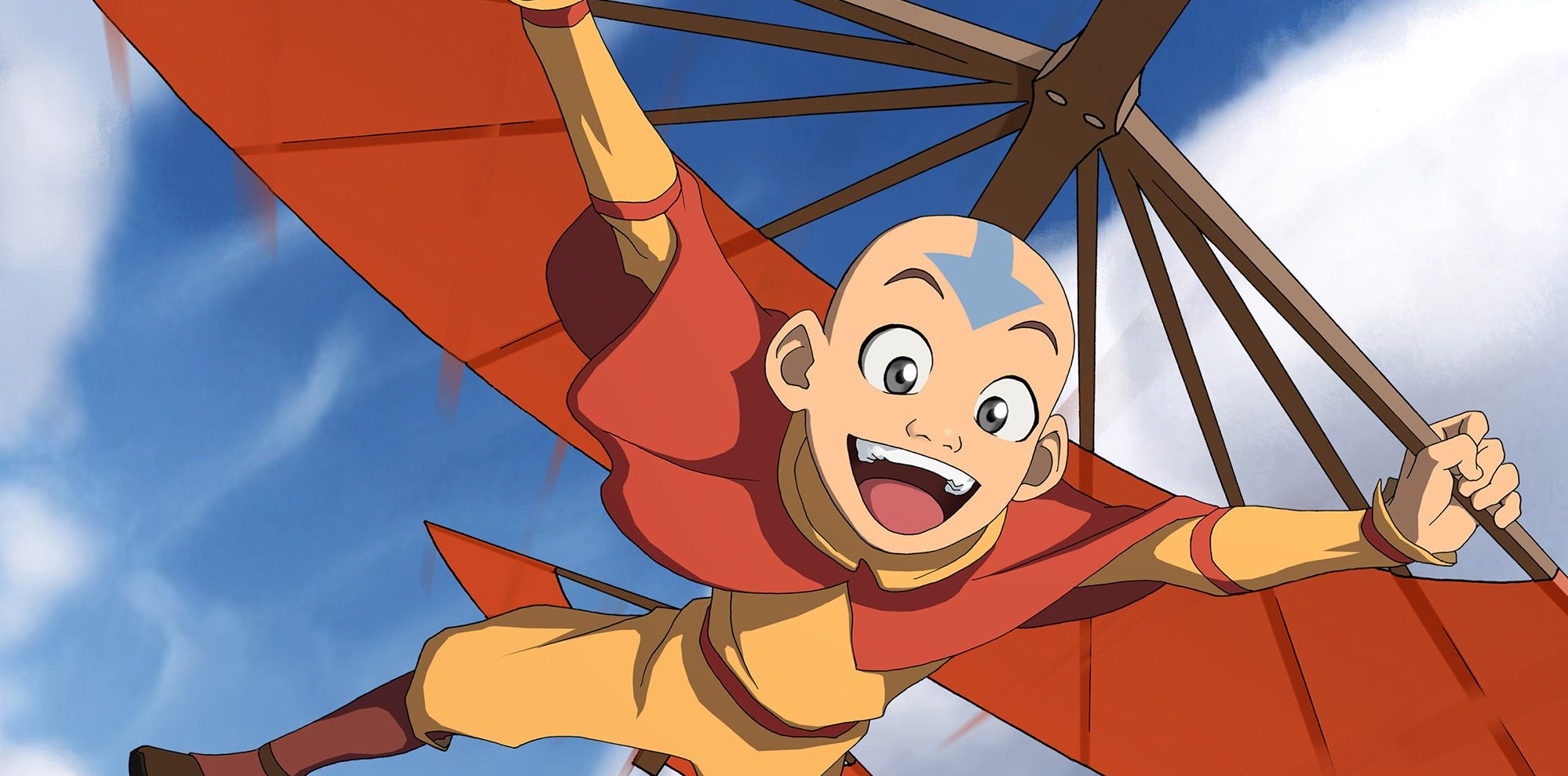Avatar: The Last Airbender is back on Netflix, and you need to watch it now
Avatar: The Last Airbender is finally back on Netflix

If you’ve spent even a few minutes online this week, you probably know that Avatar: The Last Airbender is back on Netflix as of May 15. What you might not know is that you should drop everything else you’re currently watching and go and watch — or rewatch — it.
I’m aware that you probably have other things in your media queue. I know that it’s a children’s cartoon that debuted in 2005. Nevertheless, you should do it. Because last time it was on Netflix, you put it off, and look what happened. Just look.
- Watch the other best Netflix shows
- Also check out the best Netflix movies
Avatar made its way to Netflix back in the early 2010s. Then it was on Amazon Prime for a while. But everything changed when the Fire Nation attacked. For years, it was impossible to watch Avatar on streaming services, and you had to either purchase the show à la carte or go digging around for old DVDs and Blu-rays.
Now, thanks to the upcoming live-action series, it looks like the animated version of Avatar is on Netflix for the long haul. And frankly, unless you’re still catching up on Better Call Saul, this is what you should be watching. If you’ve seen the show before, you know why — and if you haven’t, here are my most convincing arguments to rectify that oversight.
Avatar is a great show
Avatar: The Last Airbender, not to be confused with the mediocre James Cameron film or the godawful M. Night Shyamalan adaptation, is a three-season cartoon that aired on Nickelodeon from 2005 to 2008. Like a lot of cartoons on Nickelodeon, it was intended for an audience between 8 and 13 years old. But unlike a lot of cartoons on Nickelodeon, Avatar wasn’t a zany comedy; it was a fairly high-minded martial arts drama, complete with season-long arcs and a cast of three-dimensional characters who grew and changed as the show progressed.
Here’s the basic pitch: In an East Asian fantasy world, four nations, one for each of the classical elements, live in peace. An “avatar” capable of controlling all four elements is born into each generation. But the current Avatar, a young air monk named Aang, gets trapped in a block of ice for 100 years. In his absence, the belligerent Fire Nation invades the other countries and attempts to conquer the world. Sokka and Katara, a brother and sister from the peaceful Water Tribe, accidentally release Aang from his icy prison. Now, the three must embark on a globetrotting quest so that Aang can learn to master his powers and bring balance back to the world.
It’s a pretty good setup, but what really makes Avatar work is the show’s strong sense of forward momentum. Beyond the first half of the season, no plot point is static. When the characters hint at a big turning point, rest assured that the turning point is coming, and that it will radically change the status quo. This is true of everything from Aang’s vow to master new elements, to a villain who struggles for three full seasons to redeem himself.
Get instant access to breaking news, the hottest reviews, great deals and helpful tips.

Since Avatar came out right when mainstream TV was starting to experiment with long-form storytelling, it’s a little episodic at first: Aang and friends visit a new location, solve a problem, then proclaim how they’re going to make some real progress next time! But as the show grows more confident, interesting things start to happen almost every episode. The group attracts new members, then occasionally splits up for long stretches. Supporting characters step into the spotlight; major characters falter and fail; some characters even die onscreen, which is pretty dark for a kids’ show.
This means that the tone of the show changes over time, too. While Avatar starts with an adventure-of-the-week setup, it eventually tackles romances, war stories, historical flashbacks, prison breaks and even a strangely metaphysical episode where Aang has to grapple with a profound philosophical question: Can taking a life ever be justified?
I could go on all day about the story, but the bottom line is that the story is interesting, and the writing is very good. So are the animation, the sound effects, the music and the rest of the production values. The star-studded voice cast includes Jason Isaacs, Mark Hamill, Jennifer Hale, Mae Whitman, George Takei, Clancy Brown and the late, great Mako Iwamatsu.
Avatar has some of the best characters on TV
If I may get on my soapbox for just a moment: Most TV shows have really boring characters, right? I can’t analyze every single modern show in this piece, but see my breakdown on Star Trek: Picard for an example of what I mean.
Where Avatar sets itself from a lot of other shows — for both kids and adults — is that its characters are constantly growing and changing. To take the main cast as an example: Aang and Sokka start off as carefree goofballs, while Katara is more of the scolding den mother.
By the end of the first season, Aang and Katara are diligent students, while Sokka has been humbled enough times to know that he needs to change. By the middle of the third season, Aang finds himself agonizing over issues of life and death, Katara’s powers have grown to the point where she could do something positively evil with them and Sokka has dedicated himself to proving himself in battle, even though he can’t bend elements like his friends.
This isn’t even touching on Zuko, the spoiled young prince of the Fire Nation, or his enigmatic Uncle Iroh. The show’s villains are, if anything, even more interesting than its heroes, from the ambitious, resolute Admiral Zhao, to the arrogant, hypercompetent Princess Azula, to the unflappable, Machiavellian Fire Lord Ozai. (Jason Isaacs plays Zhao; Grey DeLisle plays Azula; Mark Hamill plays Ozai. That should tell you pretty much everything you need to know.)
The character evolution in the show is simply interesting to watch on its own merits. But it also helps you feel like you really went on a journey with the characters over the course of three years. The characters grow up as the show progresses, and there’s a real sense of time passing and circumstances changing. It also lets the characters make huge, catastrophic mistakes occasionally, and then have to grapple with the fallout.
Avatar is uplifting
Perhaps the most compelling reason to watch Avatar right now is simply that it’s almost guaranteed to put you in a good mood. Because Avatar is a kids’ show, it never gets too dark, with plenty of silly humor and running gags along the way. (“My cabbages!”) The heroes almost always enjoy one another’s company, and the characters they meet along the way are often honest, forthright and helpful.

There’s a general sense of enthusiasm that pervades the whole show. Yes, a hostile force is on the move, but good people working together almost always win the day. What’s more: as the show advances, we learn that the Fire Nation is hardly a monolithic force for evil. There are countless acts of good, even on the “enemy” side.
But most of all, Avatar is a show that believes in the power of change. By working hard and applying themselves, the heroes rise to meet a variety of challenges. Evil, as some of the villains learn, is a choice that we make again and again, not an inherent personality trait. Even if the whole world believes that compromising your morals is the only way to achieve victory, there’s always another path — it’s simply a matter of looking hard enough for it.
If you can make it all the way through Avatar without cracking a smile, you’ve got no sense of humor — and if you can make it all the way through without getting choked up, then you’ve got a heart of stone.
While Avatar: The Last Airbender isn’t likely to leave Netflix again soon, haven’t you put it off long enough? It’s time for a magical martial arts drama about hardworking heroes, redeemable villains and at least two love triangles that still have fans arguing, all these years later. If you’ve got kids, watch it with them; they’ll like it even more than you will.
Yip-yip!

Marshall Honorof was a senior editor for Tom's Guide, overseeing the site's coverage of gaming hardware and software. He comes from a science writing background, having studied paleomammalogy, biological anthropology, and the history of science and technology. After hours, you can find him practicing taekwondo or doing deep dives on classic sci-fi.
